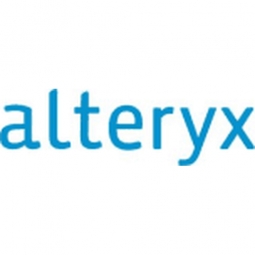下载PDF
Colorado Hospital Association Analytics Team Tackles Opioid Epidemic Head On
技术
- 分析与建模 - 大数据分析
适用行业
- 医疗保健和医院
适用功能
- 质量保证
用例
- 质量预测分析
服务
- 数据科学服务
挑战
科罗拉多医院协会 (CHA) 面临着阿片类药物泛滥的重大挑战。阿片类药物传统上用于治疗急诊科疼痛,但却导致处方药滥用,并成为非法药物的入口。根据科罗拉多州卫生保健政策和财政部门的数据,2015 年,每 36 小时就有一名科罗拉多州居民因用药过量而死亡。从数据的角度来看,情况很混乱。CHA 需要将急诊科数据与索赔基础数据结合起来,以了解各家医院的情况。每个问题似乎都指向另一个问题,从而造成了复杂而具有挑战性的情况。
关于客户
本案例研究中的客户是科罗拉多医院协会 (CHA)。CHA 是一家与科罗拉多州医院和政策制定者合作以做出更好决策的组织。CHA 的分析总监 Alexandra 花了五年多时间分析医疗数据。CHA 的分析团队还包括医疗数据分析师,例如 Dominick Kuljis,他在加入 CHA 时对 SQL 和 Excel 有所了解,但没有核心编程经验。该团队的目标是利用他们在公共卫生和化学方面的背景来推动医疗保健的发展。
解决方案
解决 CHA 挑战的方案是 Alteryx 平台。Alteryx 是一个数据分析平台,允许用户执行复杂的分析,而无需大量的编程知识。Dominick 加入 CHA 时,他担心自己最终会陷入数据分析的“技术困境”中。然而,Alteryx 平台让他能够专注于利用他在公共卫生和化学方面的背景来推动医疗保健的发展。使用 Alteryx,Dominick 感觉自己是一个由 10 人组成的团队,而不仅仅是一个人,即使在使用该平台的早期也是如此。
运营影响
相关案例.

Case Study
Hospital Inventory Management
The hospital supply chain team is responsible for ensuring that the right medical supplies are readily available to clinicians when and where needed, and to do so in the most efficient manner possible. However, many of the systems and processes in use at the cancer center for supply chain management were not best suited to support these goals. Barcoding technology, a commonly used method for inventory management of medical supplies, is labor intensive, time consuming, does not provide real-time visibility into inventory levels and can be prone to error. Consequently, the lack of accurate and real-time visibility into inventory levels across multiple supply rooms in multiple hospital facilities creates additional inefficiency in the system causing over-ordering, hoarding, and wasted supplies. Other sources of waste and cost were also identified as candidates for improvement. Existing systems and processes did not provide adequate security for high-cost inventory within the hospital, which was another driver of cost. A lack of visibility into expiration dates for supplies resulted in supplies being wasted due to past expiry dates. Storage of supplies was also a key consideration given the location of the cancer center’s facilities in a dense urban setting, where space is always at a premium. In order to address the challenges outlined above, the hospital sought a solution that would provide real-time inventory information with high levels of accuracy, reduce the level of manual effort required and enable data driven decision making to ensure that the right supplies were readily available to clinicians in the right location at the right time.

Case Study
Gas Pipeline Monitoring System for Hospitals
This system integrator focuses on providing centralized gas pipeline monitoring systems for hospitals. The service they provide makes it possible for hospitals to reduce both maintenance and labor costs. Since hospitals may not have an existing network suitable for this type of system, GPRS communication provides an easy and ready-to-use solution for remote, distributed monitoring systems System Requirements - GPRS communication - Seamless connection with SCADA software - Simple, front-end control capability - Expandable I/O channels - Combine AI, DI, and DO channels

Case Study
Driving Digital Transformations for Vitro Diagnostic Medical Devices
Diagnostic devices play a vital role in helping to improve healthcare delivery. In fact, an estimated 60 percent of the world’s medical decisions are made with support from in vitrodiagnostics (IVD) solutions, such as those provided by Roche Diagnostics, an industry leader. As the demand for medical diagnostic services grows rapidly in hospitals and clinics across China, so does the market for IVD solutions. In addition, the typically high cost of these diagnostic devices means that comprehensive post-sales services are needed. Wanteed to improve three portions of thr IVD:1. Remotely monitor and manage IVD devices as fixed assets.2. Optimizing device availability with predictive maintenance.3. Recommending the best IVD solution for a customer’s needs.

Case Study
HaemoCloud Global Blood Management System
1) Deliver a connected digital product system to protect and increase the differentiated value of Haemonetics blood and plasma solutions. 2) Improve patient outcomes by increasing the efficiency of blood supply flows. 3) Navigate and satisfy a complex web of global regulatory compliance requirements. 4) Reduce costly and labor-intensive maintenance procedures.

Case Study
Harnessing real-time data to give a holistic picture of patient health
Every day, vast quantities of data are collected about patients as they pass through health service organizations—from operational data such as treatment history and medications to physiological data captured by medical devices. The insights hidden within this treasure trove of data can be used to support more personalized treatments, more accurate diagnosis and more advanced preparative care. But since the information is generated faster than most organizations can consume it, unlocking the power of this big data can be a struggle. This type of predictive approach not only improves patient care—it also helps to reduce costs, because in the healthcare industry, prevention is almost always more cost-effective than treatment. However, collecting, analyzing and presenting these data-streams in a way that clinicians can easily understand can pose a significant technical challenge.






